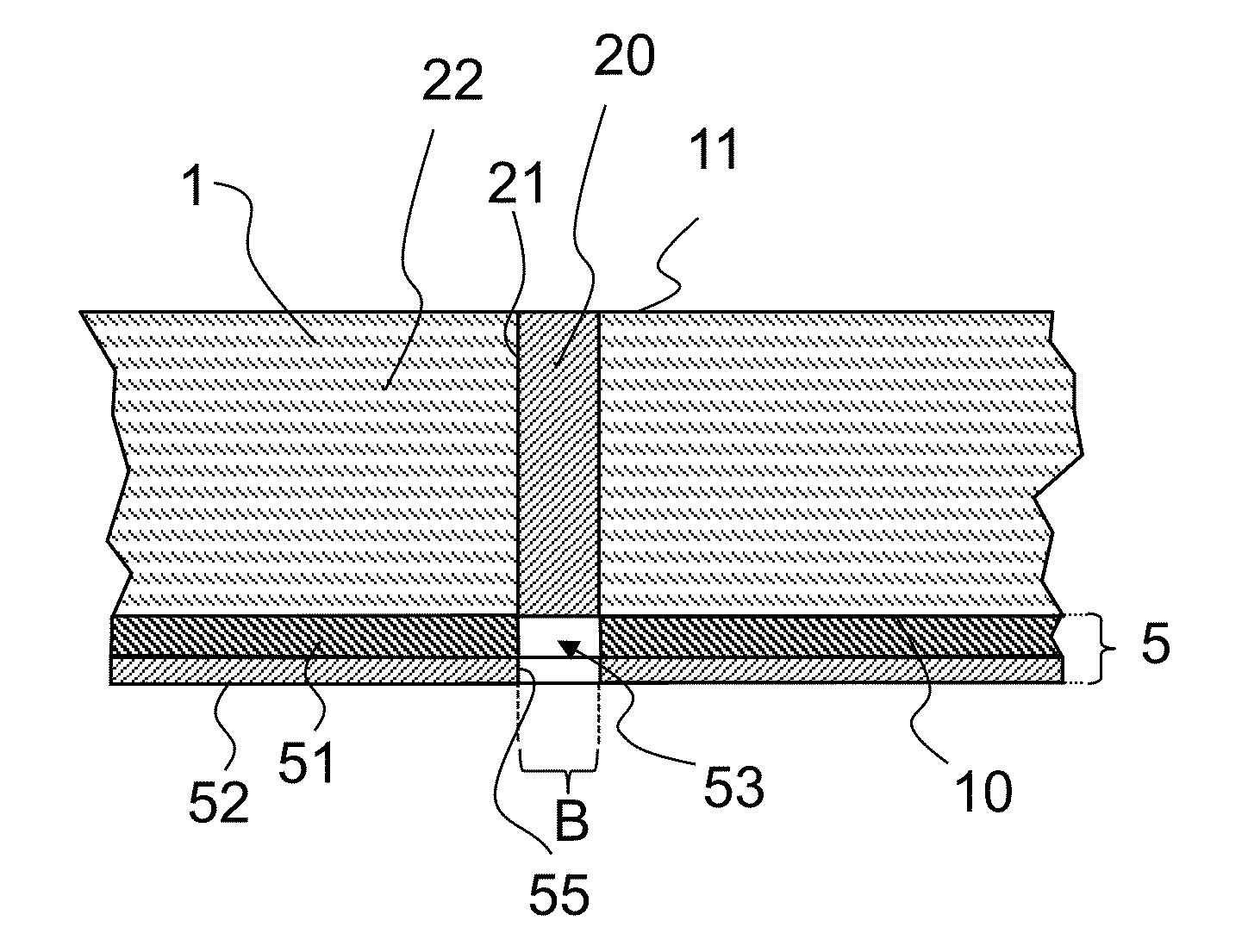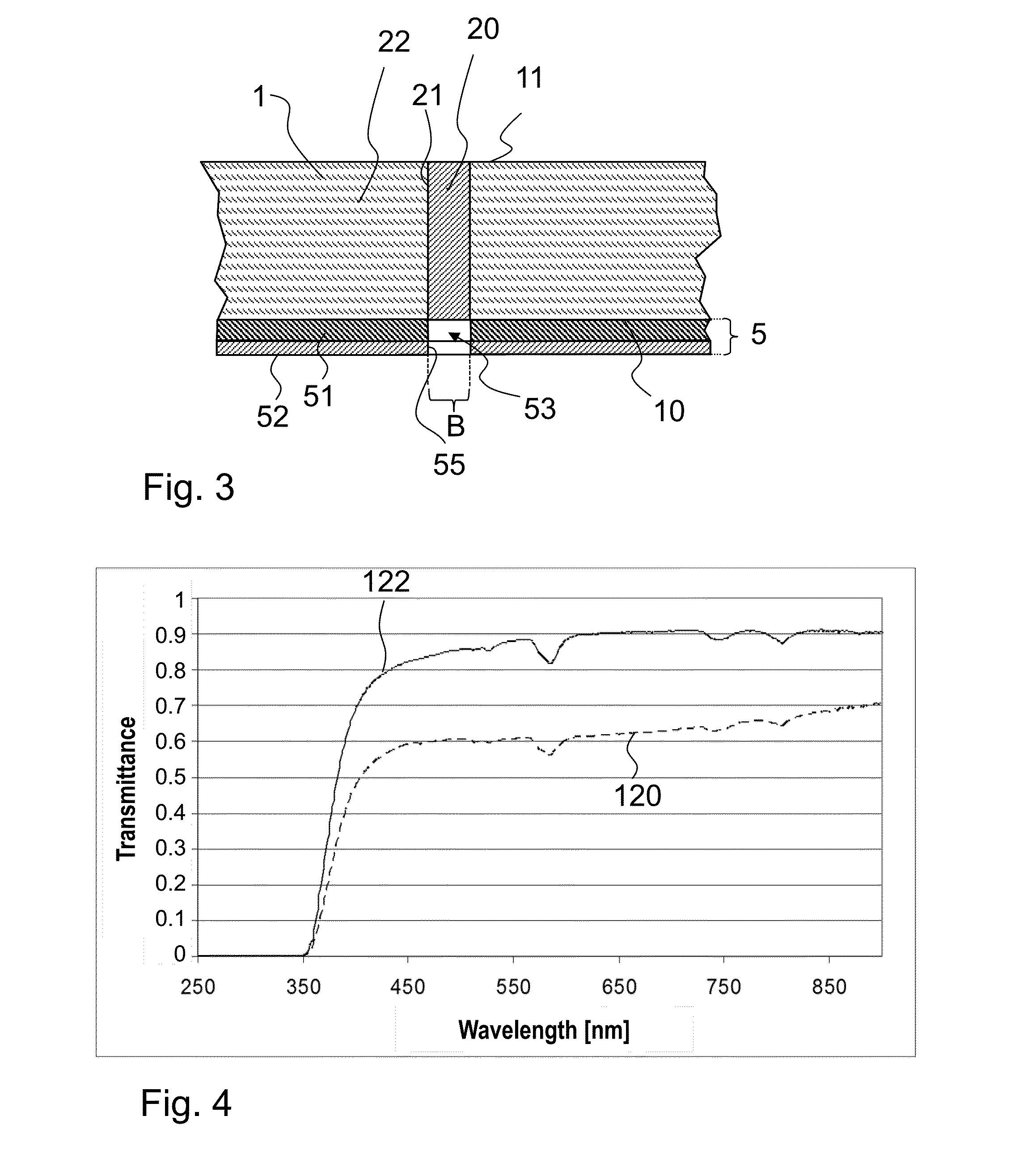Method for producing a glass ceramic element with patterned coating
a technology of glass ceramics and coatings, applied in the field of glass ceramic articles, can solve the problems of difficult to produce very fine patterns, high set-up costs, and easy smearing
- Summary
- Abstract
- Description
- Claims
- Application Information
AI Technical Summary
Benefits of technology
Problems solved by technology
Method used
Image
Examples
Embodiment Construction
[0025]For a more detailed description of a glass ceramic element 1 that is provided with a patterned coating, reference is first made to the example of FIG. 1 which comprises a coating 5 produced by conventional screen printing. The plate-shaped glass ceramic element 1 has two opposite faces 10, 11. In case of a glass ceramic element in the form of a glass ceramic cooking plate, one of the faces 10, 11 is the utilization side.
[0026]The coating 5 on at least one of faces 10, 11 is a multilayer coating consisting of a first ink layer 51 on the glass ceramic 2 and a second ink layer 52 applied to the first ink layer 51. First ink layer 51 includes a pattern feature 53. This pattern feature is defined by a region in which the glass ceramic 2 remains free, that means it is not coated there. The contour of this pattern feature may, for example, take the shape of a logo, lettering, or an icon. Due to the patterned discontinuity of the ink layer, light can pass through the glass ceramic ele...
PUM
| Property | Measurement | Unit |
|---|---|---|
| wavelength | aaaaa | aaaaa |
| distance | aaaaa | aaaaa |
| distance | aaaaa | aaaaa |
Abstract
Description
Claims
Application Information
 Login to View More
Login to View More - R&D
- Intellectual Property
- Life Sciences
- Materials
- Tech Scout
- Unparalleled Data Quality
- Higher Quality Content
- 60% Fewer Hallucinations
Browse by: Latest US Patents, China's latest patents, Technical Efficacy Thesaurus, Application Domain, Technology Topic, Popular Technical Reports.
© 2025 PatSnap. All rights reserved.Legal|Privacy policy|Modern Slavery Act Transparency Statement|Sitemap|About US| Contact US: help@patsnap.com



